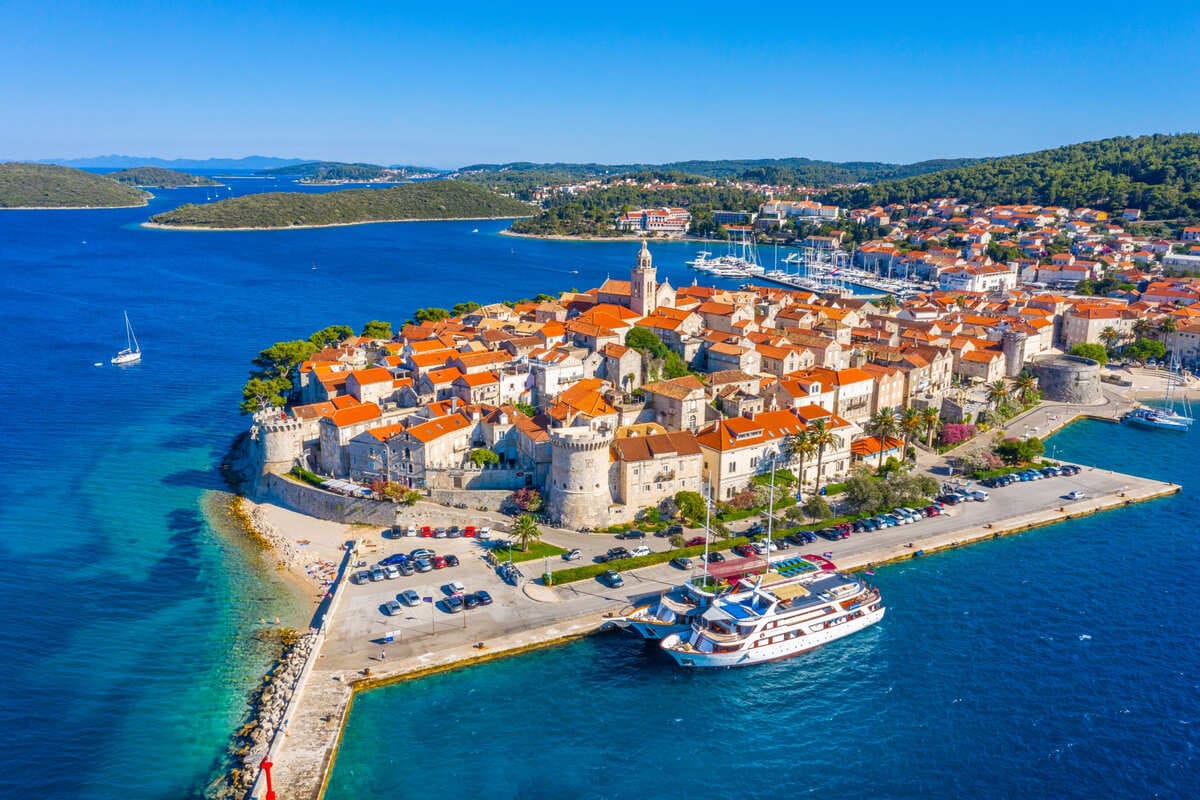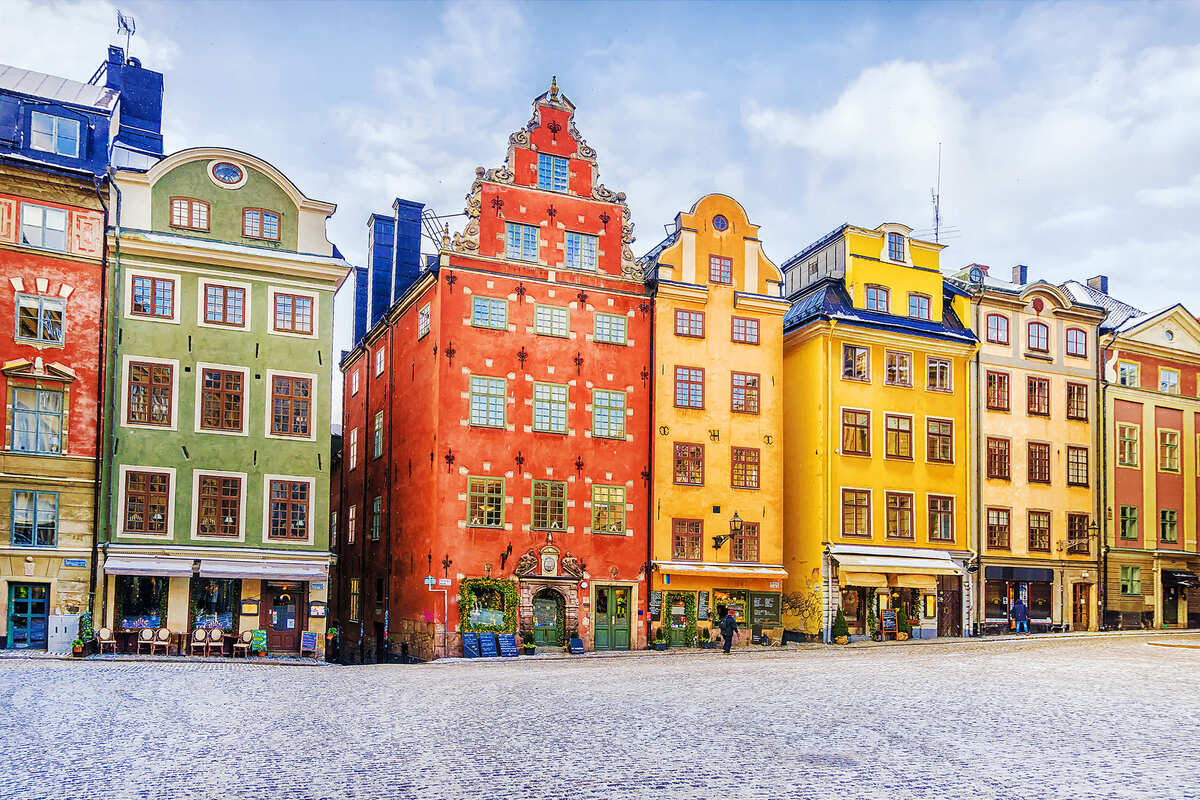[ad_1]
Summer is upon us, and if you’re planning on taking that Transatlantic flight to revel in the Old World’s ancient allure, it’s probably places like France, Italy, and Spain that first pop to mind.
Gorgeous as it may sound, that idyllic vision of Europe with twinkling Eiffel Towers and Instagrammable, pastel-hue towns doesn’t always match the reality on the ground, especially once you factor in the hordes of tourists and the wallet-straining prices.

The average cost of a one-week vacation in Paris is a whopping $4,171 for two adults, and that’s if you’re careful with your spending. Village-hopping down the Amalfi Coast could set you back an equally troubling $4,155.
And let’s face it, it’s not like you’re investing all that money in a stress-free dolce vita, anyway.
The good news is, there’s a lot more to be discovered in Europe if only you’re willing to look beyond that mainstream, glossy travel TikTok, and who knows, maybe you won’t need to burn through all your savings in the end, nor elbow your way through a crowd to take decent pictures of a particular landmark.
How about you start with these 4 (largely) unheard-of medieval gems?
Gdańsk, Poland

A vibrant port city near Poland’s Baltic Coast, Gdańsk seems to have been plucked straight from the cover of a children’s storybook: it’s colorful, filled with octagonal towers, gabled roofs, and motif-decorated facades.
Despite being mostly rebuilt following the devastation of World War II, which in fact started here, of all places, it exudes medieval charm. Walking through the ornate Green Gate, straight onto the Long Market, feels like stepping into a movie scene.

On the opposite direction, towards the waterfront, right on the banks of the Motława River, you’ll find rows of Late-Renaissance buildings and Europe’s oldest crane, built as early as 1442, as well as Rybka na Wartkiej, one of many traditional eateries serving pierogi and a killer breaded fish.
As far as prices go, Gdańsk is one of the least expensive city breaks across the pond: according to Budget Your Trip, tourists will normally spend $38 on meals, $9.14 on transportation, and $57 on hotels per day, bringing the total one-week cost to $521.
Brno, Czechia

When it comes to its spire-dotted cityscapes and astronomical clocks, we’re all familiar with Prague, but unless you’ve taken an interest in Czechia lately, chances are you’ve not been properly introduced to its less-famous sibling, Brno.
The second-largest city in the country, it has a well-preserved old center characterized by its cobbled streets and café-bordered squares—and may we add, a wide array of noteworthy historic monuments that rarely get the attention they deserve.

We’re thinking the eerie-looking, dark-stone Cathedral of St. Peter and Paul, with its twin spires that seem to pierce through to the heavens, home to beautiful Baroque altars, the 13th-century Špilberk Castle, formerly a prison, and Villa Tugendhat, one of the first modernist complexes erected in Europe.
Compared to Prague, is a relatively-affordable destination as a whole: traveling on a budget, expect to pay a daily average of $40 on meals, $2.84 on public transport, and $66 on hotels, or a grand total of $522 if you’re staying an entire week.
Pécs, Hungary

Perhaps Budapest’s closest rival in both beauty and historical relevance, Pécs is a 2,000-year-old city in southern Hungary that traces its history back to a Roman settlement, and prides itself in being among the earliest centers of Christianity in Europe:
Its 4th-century Early Christian Necropolis is a UNESCO World Heritage Site comprising an elaborate system of underground tombs richly engraved with Christian symbols.
The imposing Pécs Cathedral, a masterpiece of Romanesque architecture, was raised in 1009.

Other important attractions include the (former) Mosque of Pasha Qasim, built by the Turks upon their conquest of the city, now functioning as a church, and Széchenyi Square, with its many fountains, stately edifices, and laid-back eateries.
Wondering how much vacationing in stunning, little Pécs costs?
Based on Budget Your Trip‘s cheapest estimates, that’s roughly $22 on meals every day, $7.95 on commuting, if any at all, considering how walkable it is, and $34 per night on accommodation, totaling $317 for the week.
Timișoara, Romania

A most elegant city in Western Romania, strongly influenced by Austrian-Hungarian architecture, Timișoara may not have the edginess of Bucharest or the Bram Stoker-esque appeal of Brașov, but it certainly has a lot going for it.
Timișoara’s Old Town revolves around the large central square, Piața Victoriei, flanked by majestic, soft-colored Habsburg buildings with decorative facades and wrought-iron balconies.
If you think Moscow’s St. Basil’s is the queen of Eastern European churches, Timișoara offers the next best thing.

Sitting on the south bank of the fast-flowing Bega River, the Metropolitan Cathedral has 11 towers in total, a distinctive patterned-tile roof, and a vibrantly-painted interior, sure to satisfy your craving for Orthodox grandeur while Russia remains off-limits.
Last (but not least), as a traveler on a budget, you’ll feel right at home here: be it tripe soup, grilled sausages, or cabbage rolls, meals will run you $39-a-day, whereas getting around town costs as cheap as $12, between buses and Ubers, and hotels average an economical $50 per night.
Overall, the cost of a week-long stint in Timișoara comes to around $562.
Ready For Your Trip? Check The Latest Entry Requirements For Your Destination Here
↓ Elevate Your Travel↓
Sign Up Now For Travel Off Path Premium! No ads, VIP Content, Personal Travel Concierge, Huge Savings, Daily Deals, Members Forum & More!

✈️Join Our Travel Off Path Community Forum: Where travelers unite, ask questions, share experiences and even find like-minded travel buddies!
SUBSCRIBE TO OUR LATEST POSTS
Enter your email address to subscribe to Travel Off Path’s latest breaking travel news, straight to your inbox.
This article originally appeared on TravelOffPath.com
Opinions expressed here are the author’s alone, not those of any bank, credit card issuer, hotel, airline, or other entity. This content has not been reviewed, approved or otherwise endorsed by any of the entities included within the post.
[ad_2]
Source link

















